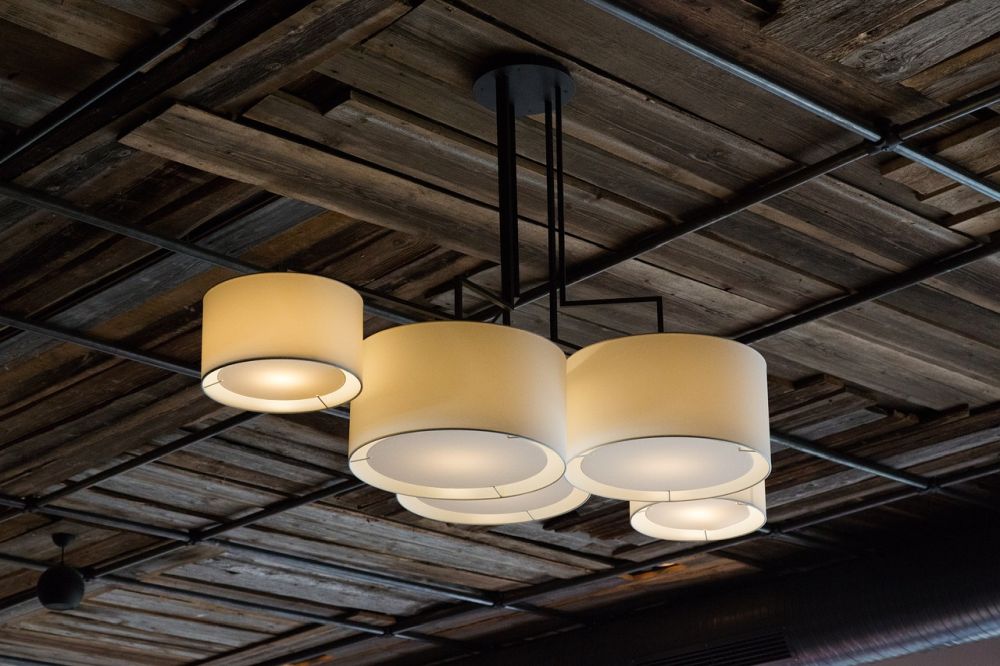Contents
Introduction
In the pursuit of transforming a workspace into a functional and well-lit environment, individuals often turn to do-it-yourself (DIY) projects as a means of achieving their vision. DIY endeavors carry a sense of satisfaction and accomplishment, allowing individuals to customize their surroundings to suit their needs and preferences. However, it’s crucial to recognize that even seemingly minor decisions made during these projects can have far-reaching consequences, particularly when it comes to matters of safety and structural integrity.
Home improvement projects inherently involve tinkering with the physical infrastructure of a space, whether it’s installing fixtures, modifying surfaces, or altering electrical systems. Each of these actions carries its own set of risks and considerations, which must be carefully navigated to ensure the safety of both the occupants and the property itself.
One such scenario that highlights the potential hazards of DIY endeavors is the installation of lighting fixtures directly onto ceiling joists without following proper instructions. At first glance, this might seem like a straightforward solution, offering stability and simplicity in mounting the lights. However, the decision to deviate from the manufacturer’s recommendations can introduce unforeseen risks and compromise the structural integrity of the installation.
Ceiling joists serve as essential load-bearing elements within a building’s framework, designed to support the weight of the structure above as well as any additional fixtures or attachments. When installing lighting fixtures, it’s imperative to consider the load-bearing capacity of the joists and adhere to established installation guidelines. Failure to do so can result in overstressing the joists, leading to sagging, cracking, or even structural failure over time.
Moreover, the decision to bypass manufacturer instructions and forego the use of chains or other suspension mechanisms can have implications beyond just structural concerns. Lighting fixtures installed directly onto ceiling joists may not allow for proper ventilation or airflow, increasing the risk of overheating and potential fire hazards. Additionally, in spaces where fire code regulations dictate the use of fire-resistant materials such as sheet rock, the proximity of the lights to the ceiling can pose compliance issues and compromise the effectiveness of fire containment measures.
The Decision to Install Directly onto Ceiling Joists
Imagine the scenario of an individual setting up their shop, eager to enhance its functionality by adding lighting fixtures. In their zeal, they opt to install the lights directly onto the ceiling joists, forgoing the chains provided in the instructions. This decision might stem from a desire for stability or a perceived simplification of the installation process. However, what may seem like a straightforward choice at the time can have unforeseen consequences.
Neglecting Manufacturer Instructions
One critical aspect of any DIY project is adherence to manufacturer instructions. These instructions are not arbitrary; they are meticulously crafted to ensure optimal performance and, most importantly, safety. By disregarding the manufacturer’s recommendation to use chains for hanging the lights, the individual in question bypasses crucial safety measures. This oversight can lead to compromised structural integrity and potentially hazardous conditions.
Understanding Fire Code Compliance
In the context of home renovation, particularly in spaces like workshops or garages, fire safety is paramount. The decision to install lighting fixtures directly onto ceiling joists introduces a fire hazard that may not be immediately apparent. When it comes time to install fire code sheet rock, the proximity of the lights to the ceiling presents a heightened risk. Fire code regulations exist to mitigate such risks, mandating specific protocols for installation to minimize the likelihood of fire-related incidents.
The Consequences of Improper Installation
The repercussions of improper installation extend beyond the immediate inconvenience of having to reinstall fixtures. There’s a broader concern for safety, both for the individual undertaking the project and for anyone who may occupy the space. Structural instability can lead to accidents, while non-compliance with fire safety regulations puts lives and property at risk. Moreover, liability issues may arise if an incident occurs due to negligence in installation practices.
The Importance of Responsible Installation Practices
This scenario underscores the need for responsible installation practices in any DIY endeavor. It serves as a reminder that shortcuts or deviations from recommended procedures can have serious implications. Before embarking on a project, individuals should thoroughly familiarize themselves with manufacturer instructions, building codes, and safety regulations. Consulting professionals or seeking guidance from experienced sources can provide invaluable insights and prevent costly mistakes.
Conclusion
In the realm of home improvement, there’s a delicate balance between creativity and responsibility. While DIY projects offer opportunities for personalization and satisfaction, they also demand meticulous attention to detail and adherence to safety protocols. The decision to install lights directly onto ceiling joists, overlooking manufacturer instructions and fire code compliance, serves as a cautionary tale. By prioritizing responsible installation practices, individuals can create spaces that are not only aesthetically pleasing but also safe and secure for themselves and others.

